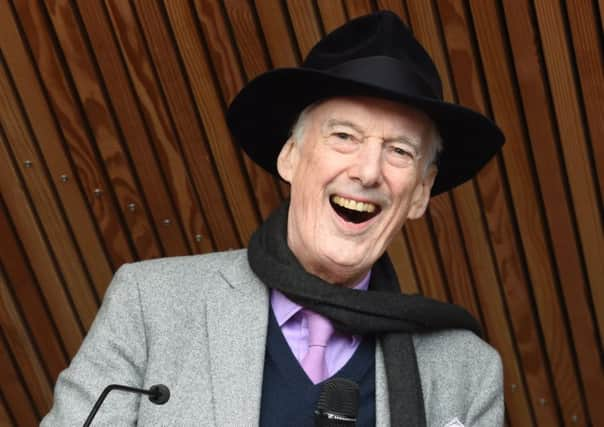Obituary: Charles Jencks, co-founder of renowned Maggie’s Centres for cancer care


To describe him as a polymath barely scratches the surface of Charles Jencks – he was a multi-faceted man with a kaleidoscope mind that embraced cultural theory, gardening, architecture and the wonder of the cosmos, among much more.
But he was probably best known by the general public for co-founding Maggie’s Cancer Caring Centres, the innovative support hubs for people living with cancer that emerged from the vision of his dying wife Maggie in the 1990s.
Advertisement
Hide AdAdvertisement
Hide AdShe wanted to see more enlightened cancer care for patients and their families and friends, somewhere to help people to live more positively with the disease and which offered free practical, emotional and social support.
The first one opened in Edinburgh in 1996 and today there are 20 centres at major cancer hospitals in the UK and abroad, seven in Scotland, all striking buildings, beautifully landscaped, designed to shine like a beacon of hope and created by some of the world’s most renowned architects.
Dumfries-born artist and designer Maggie Keswick, who died of breast cancer in 1995, was the second wife of Baltimore-born Jencks, who was the son of composer Gardner Platt Jencks and Ruth de Witt Pearl. Summers were spent in Connecticut and Cape Cod among a community of artists and intellectuals, with immersion in this bohemian atmosphere profoundly influencing young Jencks’ outlook.
After studying English literature and architecture, graduating with degrees in both from Harvard, he moved in 1965 to the UK, which became his adoptive home. He did his PhD in architectural history, studying under the radical modernist Reyner Banham at the University of London which led to his critique Modern Movements in Architecture, which became a best-selling textbook and was published in 1973. That same year his first marriage, to Pamela Balding, was dissolved and he went on to marry Maggie.
That decade marked the start of a prodigious output over more than half a century – he appeared on numerous TV programmes in the United States and in the UK, including the South Bank Show; wrote two feature films for the BBC; amassed a best-selling bibliography; lectured at more than 40 universities, from Peking to Warsaw and Yale; designed sculpture and unparalleled landscapes, many of them in Scotland, and received an abundance of awards.
His books included The Language of Post-Modern Architecture, the Architecture of Hope (on Maggie’s), the Architecture of the Jumping Universe and The Universe in the Landscape. A writer on cosmogenic art, he once observed: “To see the world in a Grain of Sand, the poetic insight of William Blake, is to find relationships between the big and small, science and spirituality, the universe and the landscape.”
This cosmic setting, he said, provided the narrative for his content-driven work, the writing and design: “I explore metaphors that underlie both growing nature and the laws of nature, parallels that root us personally in the cosmos as firmly as a plant, even while our mind escapes this home.”
His landscapes include The Garden of Cosmic Speculation at his home in Scotland and Jupiter Artland, outside Edinburgh, and the Lady of the North in Northumberland, a land sculpture of a reclining woman 100 ft high and a quarter of a mile long. An ongoing project is the Crawick Multiverse, commissioned by the Duke of Buccleuch, which culminates annually in a three-day festival of performance art and public debates with world-leading cosmologists and scientists.
Advertisement
Hide AdAdvertisement
Hide AdDescribed as the Godfather of Postmodernism, he redesigned his London home with the help of a host of postmodern architects and it was Grade I listed by Historic England in 2018. Plans are underway to convert it to a house archive museum called The Cosmic House.
A man of extraordinary creativity, Maggie’s chief executive Dame Laura Lee paid tribute to his work on Maggie’s saying he had been pivotal in turning the vision for a different type of cancer care into a reality.
“His passion, drive and imagination meant that leading architects from across the world came to build these extraordinary centres; places which have benefited thousands of people with cancer both in the UK and abroad.
“I know Charles will be remembered for his many talents, but for me personally, his legacy lies in the contribution he has made to ensuring people living with cancer, and those close to them, have the best possible support.
“Maggie’s would not be the organisation it is today without his tenacity, dedication and charisma.”
He is survived by his wife Louisa and four children from previous marriages.
ALISON SHAW